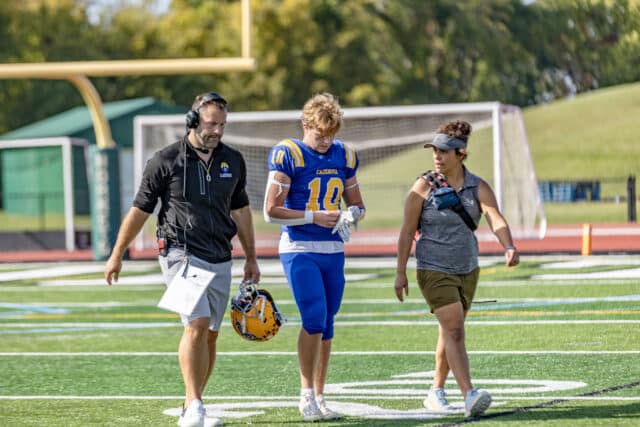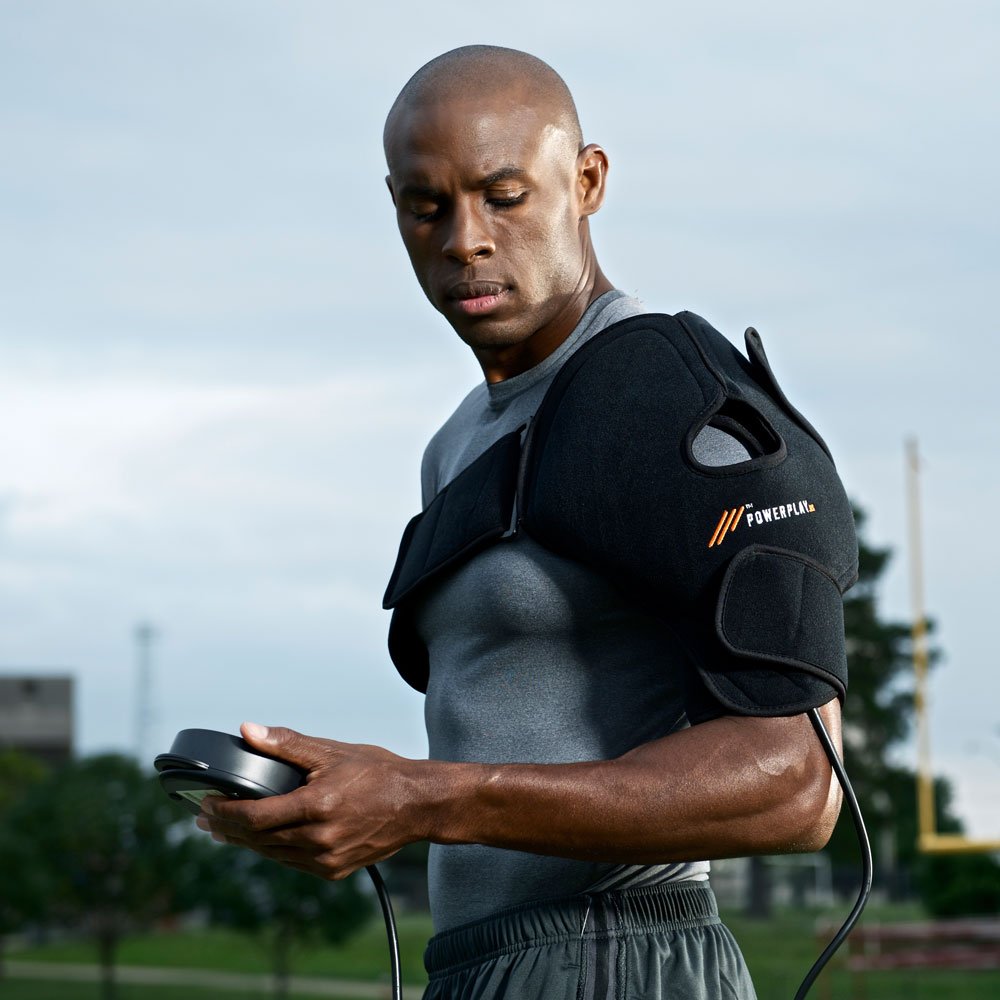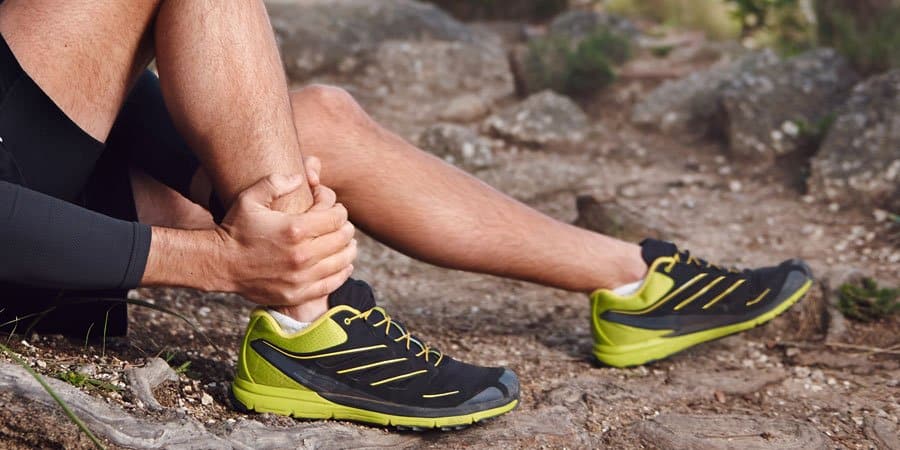
Charlie had always been a competitive athlete. At 40 years old, he decided to take on an ultra-trail run. He was in shape for the race, and was excited to see how he would perform.
However, as the race began, it also began raining, and that nice, hard-packed trail turned into mud. Unfazed, Charlie kept running, until he fell into a patch of deep mud and sprained his ankle.
If this story sounds familiar, there’s a reason for it. A sprained ankle is the most common athletic-related injury, according to a 2020 study. A broken ankle is a more severe ankle injury, and it’s important to see a physician or physical therapist to determine a proper diagnosis of what kind of an ankle injury you have sustained. Regardless, if you’re like our friend Charlie, you’re probably very anxious to return to exercise and are desperate to have your ankle recover faster.
This guide will discuss a few methods you can use to help recover from your ankle injury and get back into your sport. But before we dive into how to recover, it’s important to understand some basics about the ankle itself and the different grades of injury.
Anatomy of the Ankle

Healthy ankles are a crucial part of many sports. After all, ankles provide both stability and support. They are made of bones and many muscles, tendons and ligaments.
Although the ankle and foot are often overlooked, together they comprise more than 100 muscles and hundreds of tendons and ligaments! In fact, the largest tendon in the body, the Achilles tendon, is found in the ankle, and it is the most important tendon for walking, jumping and running.
The Three Different Types of Ankle Sprains
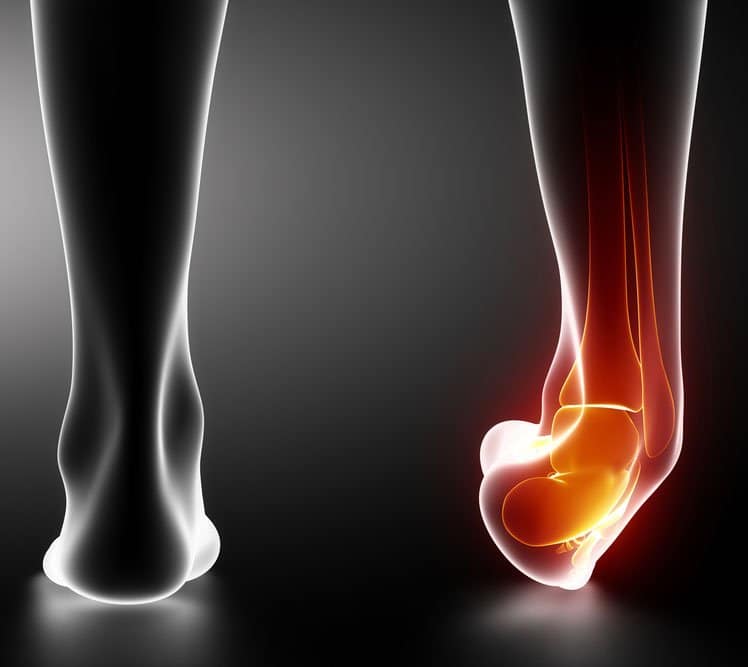
So what is an ankle sprain, exactly? A sprain refers to an injury of a ligament. When ligaments that stabilize a joint are injured, the resulting sprain can be as minor as a twisted ankle or as serious as a complete tearing of the ligament, which results in instability of the joint. This is why ankle sprains are classified into three different types of injuries known as grades.
These include:
Grade 1: A small tear in the ligament. A Grade 1 sprain has the least severe symptoms.
Grade 2: A more moderate tear in the ligament.
Grade 3: A complete tear in the ligament. The symptoms of a Grade 3 ankle sprain are severe.
It can be difficult to discern between a Grade 3 ankle sprain and a fracture, which is why it’s so important to check in with your healthcare provider if you’re experiencing pain that is affecting your training. X-rays can determine whether it’s a sprain or a fracture.
Most people suffer what’s called a lateral ankle sprain, which occurs when the foot gets twisted inwards. Medial sprains, when the foot gets twisted outward, are less common.
Recovery Methods for Ankle Injuries

First, make sure you get your ankle evaluated by a healthcare professional so you can get a proper diagnosis. With that disclaimer in place, let’s discuss some ways you can help your ankle injury recover faster.
Previously, clinicians simply advised patients to try to immobilize the injured ankle by abstaining from sports, using crutches or splinting the ankle.
However, in recent years, research has shown that continued mobility (which in turn increases blood circulation to the injured area) can help speed up recovery.
Cold Therapy
If you’ve injured your ankle, you might have pain and/or swelling as a result. Applying cold can help lessen the pain by numbing the nerve endings.
Going back to our lesson on types of ankle sprain, you’ll recall that the ankle’s ligament has been torn. When this happens, the body’s natural response is to send white blood cells to the injured area. This triggers an increase in blood flow and fluid to the ankle. Cold can reduce the swelling (which also causes pain) in the injured area.
If you’re like most people, you’ve grabbed a bag of ice (or the infamous bag of frozen peas) and applied it to your injury in the past. But this isn’t always the most elegant solution, and you may be inclined to just skip it and deal with the pain.
For a cold therapy solution you’ll actually use, look for a cold sleeve or wrap that wraps all the way around the ankle so you get maximum coverage. For instance, PowerPlay’s ankle wraps are specially designed for the contours of the ankle, and the cold sleeve fits right into our compression wrap. All you need to do is place the cold sleeve in the freezer so it’s cold when you need it.
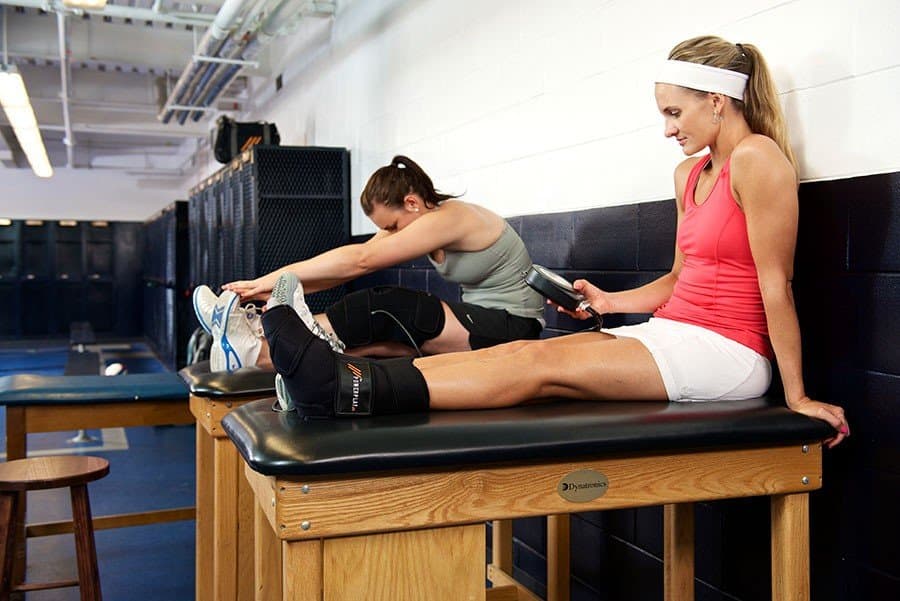
Compression Therapy
Compression is commonly used to prevent or reduce excessive swelling, and it can be a powerful way to accelerate your ankle recovery. A specially designed compression wrap can provide the right pressure without being too tight.
PowerPlay’s ankle wrap connects to a portable handheld machine that uses air to systematically apply compression to the ankle. This manually moves edema (inflammatory fluid) out of the injured area and promotes faster healing.
Cold and Compression Therapy: The Winning Combination

For the full treatment and faster recovery, combine cold and compression therapy together.
At PowerPlay, we’ve built our business around athletic recovery, taking the acronym P.R.I.C.E (protect, rest, ice, compression and elevate) to a whole new level.
An athlete looking for a faster ankle injury recovery time should consider a PowerPlay ankle wrap since it combines these two effective treatments. And when your injury heals, you can continue using your wrap to help prevent further injuries down the line.
Consistency is Key
One other caveat for any athlete excited to return to their training: be consistent.
To be successful for any prescribed treatment plan, the patient has to be committed to the full treatment. To truly have a speedy recovery, you need to be consistent about following your treatment plan and using your cold compression therapy wrap as recommended. This means using it both during the recovery process and after each workout session when you start exercising on your ankle again.
When you consistently use the PowerPlay ankle wrap, you are manually pushing lactic acid and other edema that can cause pain out of the ankle and back into circulation. And even when you’re not injured, you can use the wrap to help prevent additional injury and keep your ankles healthy.
Mobility or Stability Ankle Exercises
Another pro tip you’ve likely heard but may not be doing: work on mobility and stability. Working on your ankle’s mobility will help aid the recovery process and help prevent ankle injuries in the future.
If you need a few mobility exercises to get started, ACE Fitness has some recommendations:
You Deserve a Speedy Recovery!
Cold compression therapy wraps like PowerPlay’s ankle wrap can be a powerful addition to your overall ankle recovery plan.
But remember, if you suspect you have a more severe ankle sprain or fracture, we highly encourage you to seek professional treatment, since surgery may be required.
Best of luck to Charlie and all our friends recovering from ankle injuries. With consistent care for those all-important ankle muscles, tendons, and ligaments, you’ll be in great shape to conquer that ultra distance!
